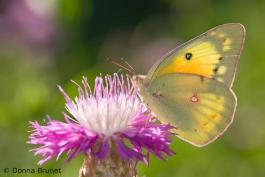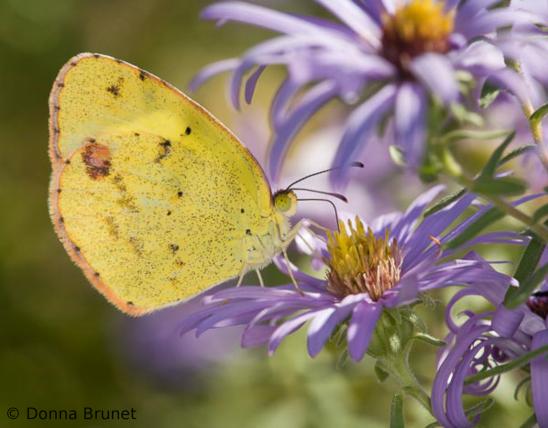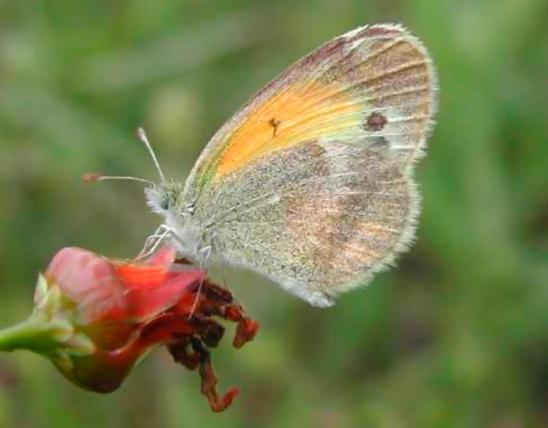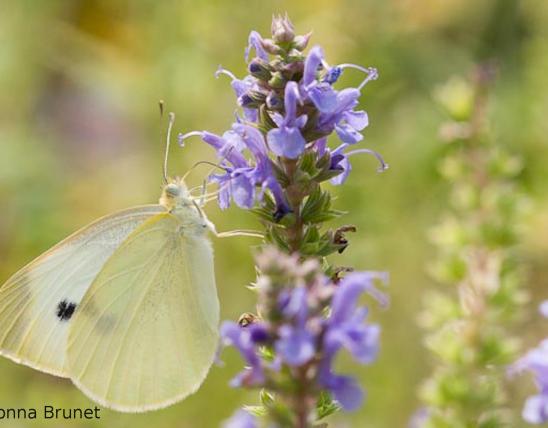
Adult orange sulphurs closely resemble the clouded sulphur (C. philodice) but are orange instead of clear yellow. The amount of orange can vary, and hybrids are common. Both sexes have a dark border; there are pale spots within the border on females. The underside is yellow-orange with a double silver spot rimmed with reddish scales. The white female form is indistinguishable in the field from white clouded sulphurs.
Larvae are green, with a pale dorsal (along the top) stripe and a white stripe edged with black along the sides.
Wingspan: 1¼–2¼ inches.

Statewide.
Habitat and Conservation
Occurs in fields, along roads, and in residential gardens.
Food
Larvae feed on legumes, especially alfalfa, white clover, and white sweet clover. The caterpillars mostly eat at night. Adults often gather in numbers at moist places and are attracted to many flower species.
Status
One of the most common butterflies in Missouri and a periodic pest in alfalfa fields.
Life Cycle
Adults fly from late April into December. There are at least three broods. The yellow and orange pigments in the scales of sulphurs are high in nitrogen. In white-form females, the nitrogen has been used for faster development from pupa to adult and in egg production. There may be a cost for these white individuals: studies on other species in this genus suggest that males prefer to mate with normally colored females.
Human Connections
In years when the population of this species peaks, the larvae can inflict substantial damage on alfalfa crops. But there is always another side, and we must not discount their beauty and their irreplaceable role in nature.
Ecosystem Connections
The larvae graze on the leaves of their food plants, while predators work to seek them out. Soon after hatching, the larvae move to the undersides of leaves and begin eating the tip. Nighttime feeding also helps hide them from flying predators.


































